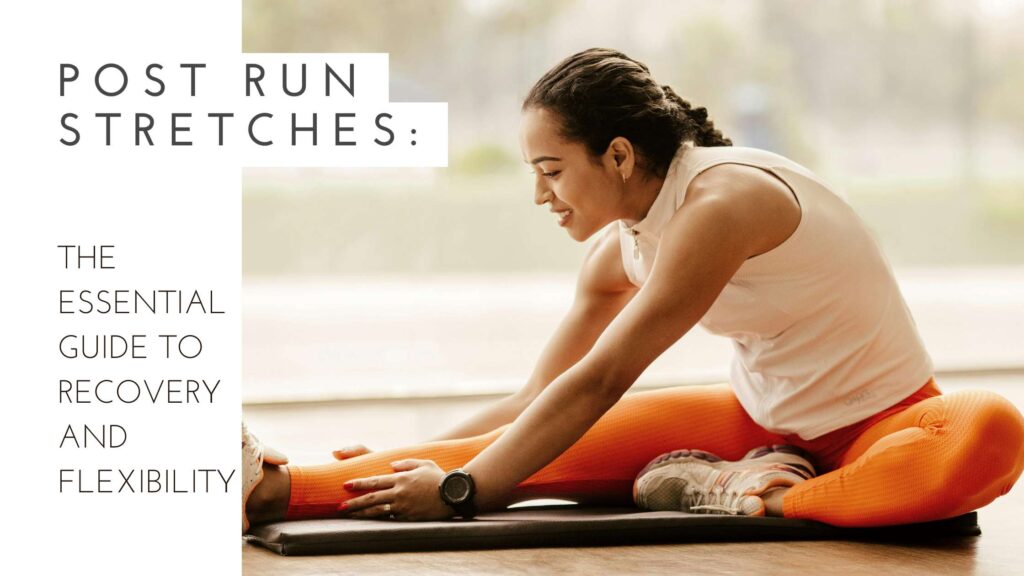Running is an incredible way to stay fit, clear your mind, and challenge your limits. But as any seasoned runner will tell you, your work isn’t done once you cross the finish line or hit your mileage goal for the day. One of the most critical components of a runner’s routine happens after the run: stretching. In this guide, we’ll explore the importance of post run stretches, share the best techniques, and answer your most pressing questions about recovery.
Why Are Post-Run Stretches Important?
After running, your muscles are warm and pliable, making it the perfect time to stretch. Stretching after a run offers numerous benefits, including:
- Reduced Muscle Soreness: Stretching can help ease delayed onset muscle soreness (DOMS) that often follows intense runs.
- Improved Flexibility: Regular stretching increases your range of motion over time.
- Enhanced Recovery: Stretching promotes blood flow to the muscles, helping to deliver oxygen and nutrients for quicker recovery.
- Injury Prevention: Keeping your muscles flexible and balanced reduces your risk of injuries like strains and tears.
Pro Tip: Stretching is most effective after your run while your muscles are still warm.
The Best Post-Run Stretches
Here’s a curated list of the best post-run stretches. Each stretch targets key muscles used during running, helping you recover effectively and improve flexibility.
1. Standing Quad Stretch
Target: Quadriceps
How to do it:
- Stand tall and grab your right ankle with your right hand.
- Pull your heel toward your glutes until you feel a gentle stretch in the front of your thigh.
- Keep your knees close together and avoid arching your lower back.
- Hold for 20–30 seconds, then switch legs.
Pro Tip: Hold onto a wall or sturdy object if balancing is challenging.
2. Hamstring Stretch
Target: Hamstrings
How to do it:
- Sit on the ground with one leg extended and the other bent, with the sole resting against your inner thigh.
- Reach toward your toes on the extended leg, keeping your back straight.
- Hold for 20–30 seconds, then switch sides.
Pro Tip: Avoid bouncing during this stretch; a steady, gentle reach is safer and more effective.
3. Calf Stretch
Target: Calves
How to do it:
- Stand facing a wall, placing both hands against it.
- Step one foot back, keeping it straight with the heel pressed into the ground.
- Bend your front knee to deepen the stretch in your back leg.
- Hold for 20–30 seconds, then switch legs.
4. Hip Flexor Stretch
Target: Hip Flexors
How to do it:
- Start in a lunge position, with one knee on the ground and the other leg bent at a 90-degree angle in front of you.
- Push your hips forward gently until you feel a stretch in the front of your hip.
- Hold for 20–30 seconds, then switch sides.
Pro Tip: Keep your back straight and avoid overextending your lower back.
5. Butterfly Stretch
Target: Inner Thighs and Hips
How to do it:
- Sit on the floor with the soles of your feet pressed together.
- Hold your feet with your hands and gently press your knees toward the ground.
- Hold for 20–30 seconds.
Tips for Effective Post-Run Stretches
To get the most out of your post-run stretching routine, follow these tips:
- Stretch While Warm: Stretching cold muscles can lead to injury. Always stretch after your run when your muscles are still warm.
- Breathe Deeply: Proper breathing helps you relax and get deeper into each stretch.
- Don’t Rush: Take your time with each stretch. A rushed session won’t provide the same benefits as a focused, deliberate one.
- Be Consistent: Like any aspect of fitness, consistency is key. Stretch after every run to see lasting improvements.
Common Mistakes to Avoid in Post-Run Stretches
Even though stretching is essential, doing it incorrectly can lead to inefficiency or injury. Avoid these common mistakes:
- Skipping Stretches: Neglecting stretching can lead to tightness and potential injuries over time.
- Holding Your Breath: Forgetting to breathe deeply can make stretches less effective.
- Overstretching: Stretching should never be painful. If you feel discomfort, ease up.
- Not Holding Stretches Long Enough: For the best results, aim for at least 20–30 seconds per stretch.
A Complete Post-Run Stretching Routine
Here’s a quick and effective post-run stretching routine to try:
- Standing Quad Stretch – 30 seconds each leg
- Hamstring Stretch – 30 seconds each leg
- Calf Stretch – 30 seconds each leg
- Hip Flexor Stretch – 30 seconds on each side
- Butterfly Stretch – 30 seconds
- Child’s Pose – 30 seconds (Bonus stretch for the lower back)
This routine takes less than 10 minutes and leaves you feeling refreshed and ready for your next run.
The Long-Term Benefits of Post-Run Stretches
Incorporating post-run stretches into your routine doesn’t just provide immediate relief. Over time, you’ll notice:
- Increased overall flexibility.
- Improved posture.
- Reduced injury rates.
- Enhanced performance due to better muscle function.
Frequently Asked Questions About Post-Run Stretches
Q: Should I stretch before or after running?
A: Stretching after running is more effective because your muscles are warm and pliable. Before running, dynamic warm-ups like leg swings and lunges are better for preparing your body.
Q: How long should I spend on post-run stretches?
A: Aim for at least 10 minutes, targeting all the major muscle groups used during running.
Q: Can stretching prevent all running injuries?
A: While stretching reduces the risk of specific injuries, proper form, recovery, and cross-training are equally important.
Stretch Your Way to Better Running
Post-run stretches are more than just a cool-down activity—they’re vital to every runner’s routine. By incorporating these stretches, you’ll recover faster, run better, and stay injury-free.
Now it’s your turn—lace up your shoes, hit the road, and make stretching a non-negotiable part of your routine!
